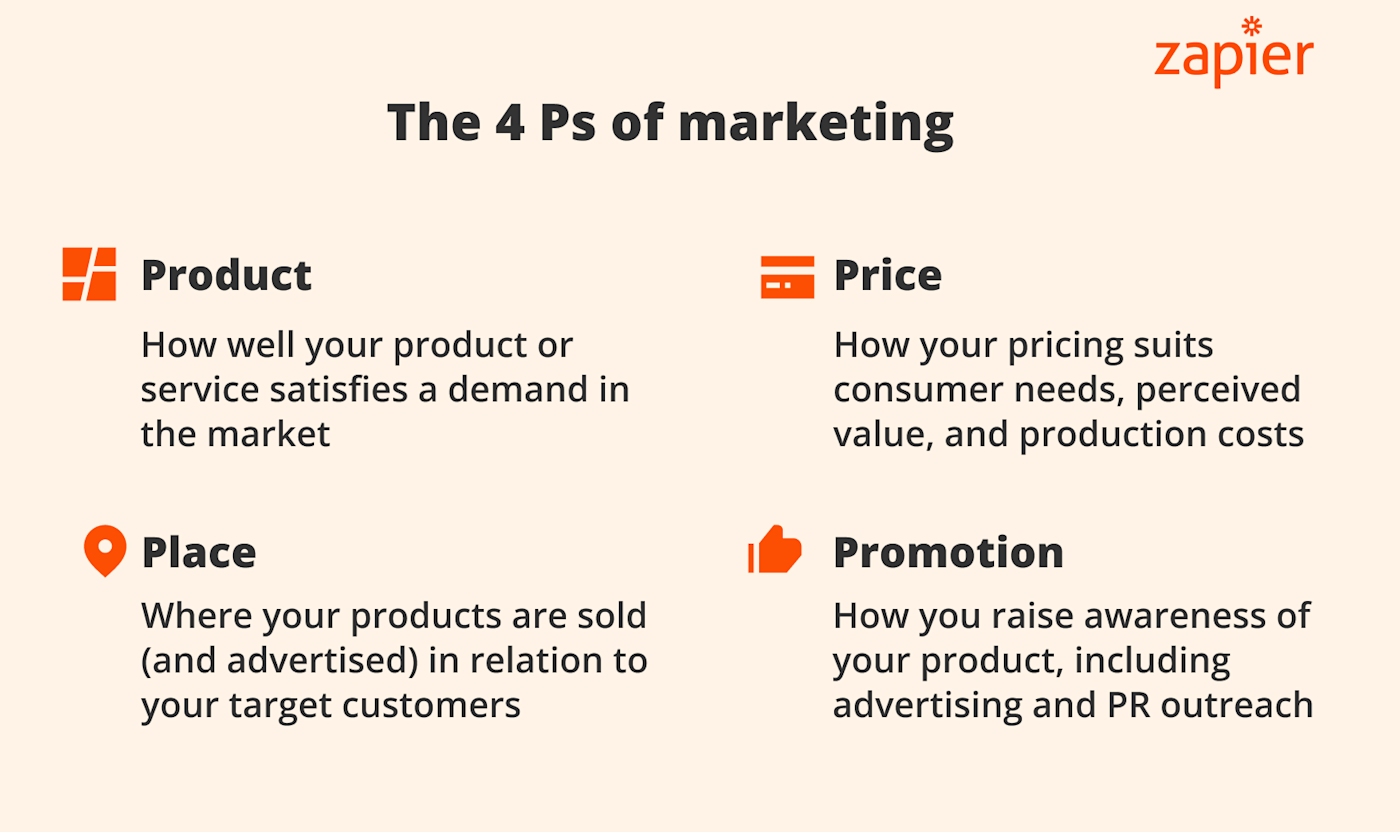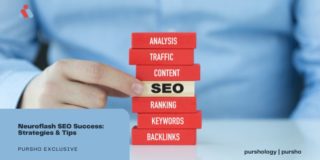A lot can slip through the cracks when overseeing multiple marketing strategies, but the 4 Ps of marketing, AKA the marketing mix, act as a useful safety net—never mind that they sound like the start of a kindergarten lesson.
Grow your business with marketing automation
The 4 Ps of marketing cover all the basics of marketing, many of which you’re already familiar with. The idea is to create an easy and mnemonic method for remembering the fundamentals; when you’re stuck or confused about a strategic decision, that’s when you need to get back to basics.
So consider this guide somewhere between a refresher course and an advanced technique seminar. We’ll cover each of the Ps thoroughly, including an overview and best practices—plus plenty of 4 Ps of marketing examples.
What are the 4 Ps of marketing?
Early 1900s economist Neil H. Borden first came up with the “marketing mix,” what we know today as the 4 Ps of marketing. During a kind of marketing revolution in the 1940s, coinciding with the emergence of marketing theory, Borden proposed a somewhat complicated list of essentials for successful marketing.
Over the next decades, his ideas proved true, and in the 1960s, his list was simplified as the “4 Ps of marketing” for the sake of accessibility. Although Borden couldn’t predict the technological advances of the half-century or so, the core of his message still helps marketers in all industries today.

The 4 Ps of marketing are:
-
Product: how well your goods or services satisfy a demand
-
Price: how your pricing suits consumer needs, perceived value, and production costs
-
Place: where your products are sold (and advertised) in relation to your target customers
-
Promotion: how you raise awareness of your product, including advertising and PR outreach
While the methods may have changed since the days of Neil Borden, his ideas remain at the heart of good marketing. Below, we’ll look at the four Ps of marketing individually, and I’ll share some modernized best practices and examples to help you understand the big picture.
1. Product
Your product—which for all intents and purposes includes services—is the nucleus of your marketing. That’s not to say your product defines your marketing strategy, but it’s certainly where you start. (After all, just look at what past marketing geniuses did with pet rocks.)
The bare minimum for a product is that it satisfies some consumer need, even if that need is only imagined. Although many products aim at practical needs (i.e., food or toilet paper), it’s equally viable to offer products that satisfy emotional needs like status or identity. Think about customers who buy six-figure watches when they can just tell time on their phones.
Ideally, your products or service will fit into a market opening, fulfilling a need that current products do not. In the digital age, new products often stem from technological advances where solutions simply didn’t exist before.
But it’s just as typical to improve upon an existing product or target an underserved niche. For example, rubber duckies have existed for ages, but what about rubber duckies with pop culture references? Fans of lesser-known pop culture don’t have much merchandise available, so companies like CelebriDucks are able to capitalize on those ignored niches.
If you’re looking to improve your existing product or launch a new product line, consider your target customers’ pain points, or things that cause them discomfort. A good product rectifies the consumer’s pain points, whether a minor inconvenience (an alarm app to help you wake up on time) or something more life-threatening (a smoke detector to safeguard against fires).
Finally, you need your product to stand out from the competition. Even if you create an original and successful product, it won’t be long before a rival comes in with a copycat product—or worse, an even better version.
In a crowded market, you need to add something extra to incentivize people to choose you over your competition. These special features should serve some other pain point, even something superficial (e.g., your competitors don’t offer their products in the color blue, so you make yours in blue).

2. Price
Pricing affects a lot more than profits: strategic pricing can help you break into a new market, garner customer loyalty, or establish your brand as either high-end or cost-effective.
First and foremost, your pricing should cover all the costs of maintaining your business. There are exceptions to this rule:
-
You have multiple products that cover costs, leaving you more wiggle room to experiment with the prices of individual product lines.
-
You temporarily sell at a loss in order to break into a new market or segment, or to undercut competitors short-term.
Your prices also directly feed into your branding. If you want to come across as an exclusive “premium” brand, you’ll want to raise prices as high as people are willing to pay. Alternatively, you could position yourself as the cheaper option in an expensive market, fulfilling the needs of consumers who can’t afford your competitor’s products.
There are dozens of different pricing strategies, and only a few of them focus on maximizing profits. Most are designed to fit specific situations or goals, such as setting a higher price but moving fewer units to recover investment costs (“price skimming”), or raising the price of one item to encourage sales on another lower-cost item (“premium decoy pricing”).
It’s worth taking the time to review the list to see if any of the common pricing strategies can help your particular needs.

3. Place
Don’t worry so much about selling where everyone shops; search for where your specific customer types shop. Amazon, Etsy, and brick-and-mortar Walmarts all have very different shoppers. The more you narrow down your target group, the easier it is to find them—not to mention you don’t waste resources marketing to dead-end segments.
Start by identifying both the demographics (age, gender, income, location, etc.) and psychographics (lifestyle, personality traits, ideologies, values, etc.) of your target customers. This also adds insight into how they shop, which can help you choose the right sales channels and types of promotions to offer.
Specifically, pay attention to whether your target customers prefer to shop through eCommerce or at brick-and-mortar stores. Depending on the industry and that customer segment’s tastes, you may need to switch between online and offline.
Equally important, you should find the best places to advertise and promote your products, again going to where your target customers are. Advertising channels come in all shapes and sizes, with something for every customer segment and every budget.
Consider which social media platforms your shoppers prefer, which public venues they frequent, which blogs and news sites they go to, and even which search engines they use. Finding your audience is the first step before actually reaching out to them, which brings us to our last P…

4. Promotion
Last in the 4 Ps of marketing is promotion, which encompasses all publicity, outreach, and advertising, plus literal promotions like special offers and contests.
Advertising is the most common form of promotion, and for most companies a flat-out necessity. Ads are a direct approach to raising brand awareness and attracting new customers by broadcasting the benefits of your products. Ideally, your ads draw attention to the pain points that your product solves, possibly even adding urgency or raising the stakes.
The content of your ads can also further your branding; using the right visuals, colors, wording, and typography can influence how shoppers perceive your brand. The image of your brand impacts purchasing decisions, especially if you’re promoting a certain identity or using exclusivity pricing. And when designing your ad, don’t forget a strong call to action.
Different types of deals and special promotions also appeal to different types of customer groups—an ongoing theme in all aspects of marketing. While seemingly everyone likes a good sale, more specific promotions can assist in other goals. For example, coupon codes through newsletters can increase email subscriptions, and two-for-one deals can help you unload less desirable inventory. However, the first step is seeing what kinds of deals your target shoppers prefer.
Promotion isn’t just about advertising and deals, though; it’s also about outreach and engagement in general.
-
Review websites offer social proof, so focus on getting those five-star reviews.
-
On social media, you can interact with shoppers directly.
-
If you can impress someone with your customer service, there’s a high chance they’ll mention the experience with their friends (but beware of bad customer service for the same reason).
-
Refer-a-friend promotions and affiliate partnerships can effectively spread the word about you and your products.
-
Influencer marketing provides not only a wide new audience of like-minded shoppers, but also a vote of confidence from a trusted authority in whatever industry the influencer represents.
The list goes on.

Bringing it all together
While each P works great as an individual metric, they work even better when used together. For example, the cost of manufacturing your product should directly factor into its price; where you choose to sell your products should influence how you promote and advertise them; and so on.
The 4 Ps of marketing are split up just to make them easier to understand, but in practice, they’re inseparable. When planning your overall marketing strategy, don’t neglect any single area. Instead, consider how the choices you make for one will impact the others, and aim for marketing strategies that complement all four areas at once.
[adsanity_group align=’alignnone’ num_ads=1 num_columns=1 group_ids=’15192′]
Need Any Technology Assistance? Call Pursho @ 0731-6725516




